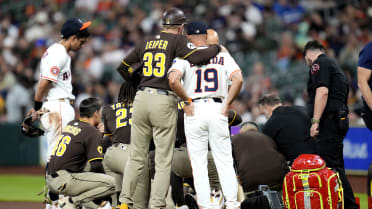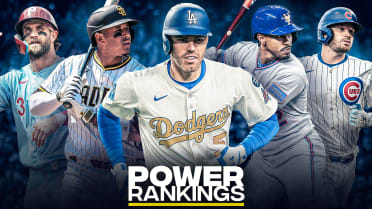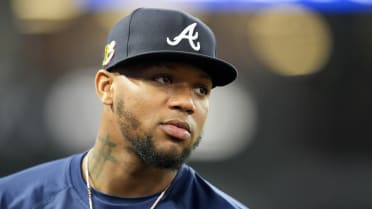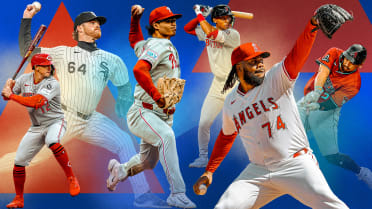Thoughts on getting Josh Hader stretched out and transitioned into a starter? If Craig Counsell isn't keen on that idea, would he be willing to let him work the eighth and ninth to close out games?
-- @jaredlinden on Twitter
Here's one way to think about Hader: In the role he's in now -- this ultra-flexible, use-by-choice sort of role in which it is equally possible he pitches two or three innings in the middle of a game as he is called upon against Anthony Rizzo or Joey Votto to start the ninth, Counsell and the Brewers essentially get to pick who Hader pitches against. They have control.
If you start Hader, you lose control over who he faces. The other team chooses. If you make him the closer, you lose control, because now the game itself helps dictate when he pitches, and which portion of the opponents' lineup he draws.
:: Submit a question to the Brewers Inbox ::
Could Hader succeed as a starter or a closer? Sure, if he can harness that changeup. But at this stage of his development, Milwaukee wants control of when and against whom it uses Hader. After an entire offseason of a room full of analysts crunching this question, the Brewers have decided that is the way to squeeze maximum value, for now, out of an electric arm.
You are assuming Hader equals Corey Kluber as a starter. That's a heck of a leap. The way they're looking at it now is two-pitch Hader impacting 60-70 games is better than two-pitch Hader making 25-30 starts. If he becomes three-pitch Hader, now we're talking.
So maybe Hader will move back to a starting role at some point. But if the Brewers were going to do that now, they would have already done it.
I think it might happen after things start clicking. If we've learned anything about the Brewers of David Stearns and Counsell, it's that they place tremendous value on flexibility. That means both positional flexibility and roster flexibility.
There's a group of pitchers with options -- Brent Suter, Junior Guerra, Brandon Woodruff, Taylor Williams, Adrian Houser, Jorge Lopez, Corbin Burnes, Freddy Peralta, Aaron Wilkerson when he gets healthy, maybe even guys like Jacob Barnes and Zach Davies if performance and need dictate -- who can be freely moved back and forth between the Majors and Minors. Because Milwaukee is among the analytically minded clubs who make liberal use of its bullpen once a starting pitcher has completed his second turn through a lineup, shuttling players back and forth is one way to keep a fresh 'pen.
For those players, it can be a real physical and mental challenge. But if you can get players to buy into it the way Suter did early last season, it can be a useful strategy.
I asked our MLB.com statistical guru Mike Petriello to take a look at Ryan Braun's numbers so far, and he had the same first reaction I did: Small sample alert!
So with the vital understanding that 46 plate appearance is way too small a sample to draw any conclusions, here's some of what Petriello found:
• The most notable thing is lack of contact. Braun has struck out in 28 percent of his plate appearances so far after 18 percent last year and 18 percent in his career. He's doing a better job of not chasing (31 percent chase rate is down from 38 percent in each of the last two years), but he's also swinging at fewer strikes (zone swing rate down from 70 percent to 64 percent) and making contact with slightly fewer pitches in the zone (84 percent down from 88 percent).
• When Braun does make contact, his hard-hit rate of 33 percent is down from 44 percent in 2017. And he hasn't had many high-value hits robbed; Braun had one lineout that carried a 73 percent hit probability, but that's the only out above 55 percent.
• Braun's pull rate is 48 percent, up from 38 percent last year, 36 percent the year before and 31 percent in 2015. Maybe that's a sign of a player aging into his 30s. Maybe it means nothing because we are 13 games into the season.
Give Braun a chance to get to 100 at-bats before you get worried.
From the desk of Brewers farm director Tom Flanagan: "Keston Hiura was hit by a pitch on his left shoulder in the doubleheader on Sunday, and it tightened up on him and had some residual soreness. Now that it has resolved he should be back in there DH'ing for the Mudcats [Thursday] night."
Hiura has been limited to DH duty in the early going, because he came down with some elbow soreness late in Spring Training after playing catch-up at second base. Remember, he didn't play the field in the Minors until the fall instructional league because of a pre-existing elbow injury they worried might need surgery. Hiura avoided going under the knife, and it sounds like the Brewers believe he will pull through this latest period of soreness with some more time off from throwing.
Never. Ever.
Adam McCalvy has covered the Brewers for MLB.com since 2001. Follow him on Twitter @AdamMcCalvy and like him on Facebook.



